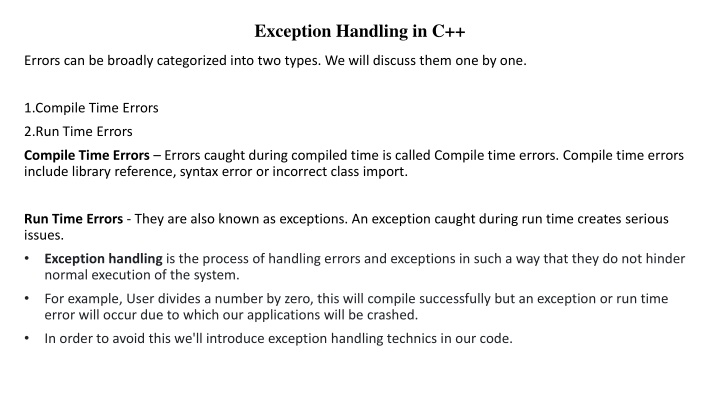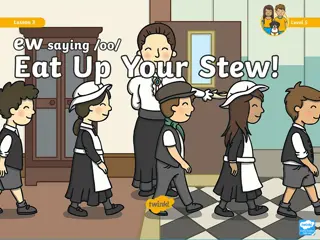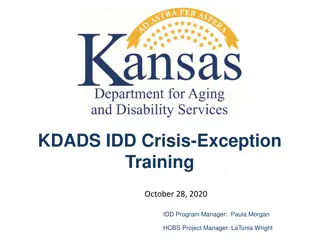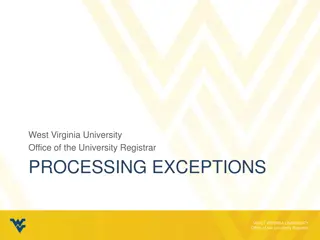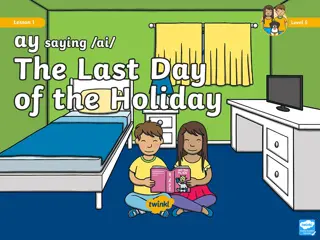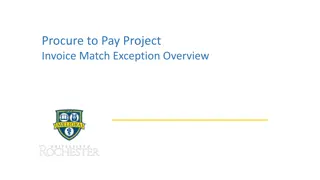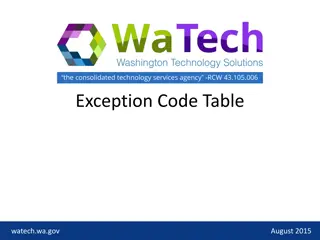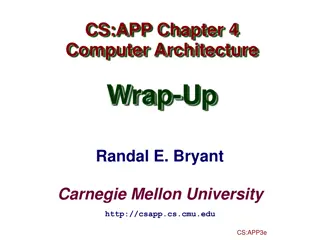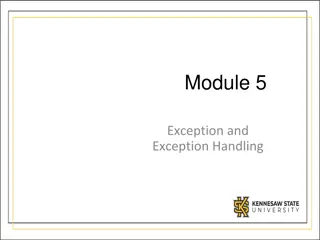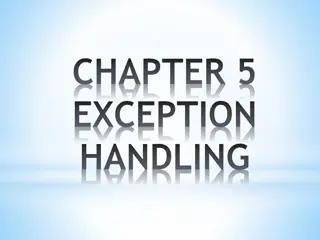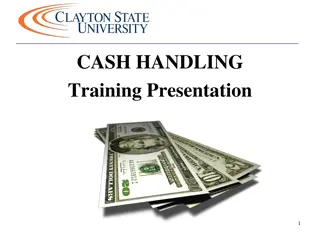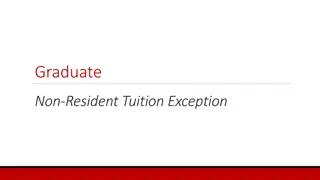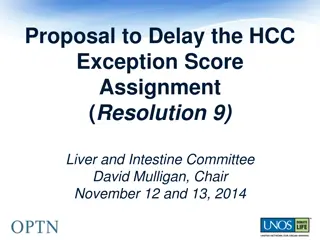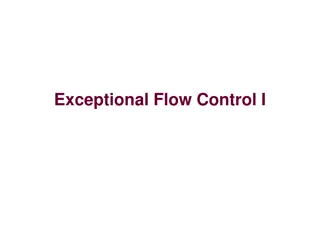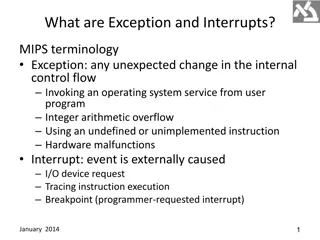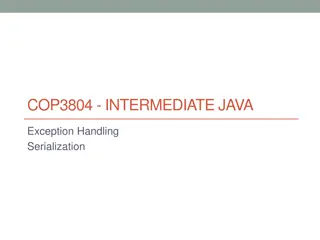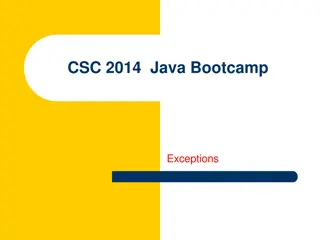Exception Handling in C++
In C++, errors are classified into Compile Time Errors and Run Time Errors. Compile Time Errors are detected during compilation, while Run Time Errors occur during program execution. Understanding these distinctions is crucial for effective debugging and troubleshooting in C++ programming. This article provides an overview of each error type and their significance in writing robust code.
Download Presentation

Please find below an Image/Link to download the presentation.
The content on the website is provided AS IS for your information and personal use only. It may not be sold, licensed, or shared on other websites without obtaining consent from the author.If you encounter any issues during the download, it is possible that the publisher has removed the file from their server.
You are allowed to download the files provided on this website for personal or commercial use, subject to the condition that they are used lawfully. All files are the property of their respective owners.
The content on the website is provided AS IS for your information and personal use only. It may not be sold, licensed, or shared on other websites without obtaining consent from the author.
E N D
Presentation Transcript
Exception Handling in C++ Errors can be broadly categorized into two types. We will discuss them one by one. 1.Compile Time Errors 2.Run Time Errors Compile Time Errors Errors caught during compiled time is called Compile time errors. Compile time errors include library reference, syntax error or incorrect class import. Run Time Errors - They are also known as exceptions. An exception caught during run time creates serious issues. Exception handling is the process of handling errors and exceptions in such a way that they do not hinder normal execution of the system. For example, User divides a number by zero, this will compile successfully but an exception or run time error will occur due to which our applications will be crashed. In order to avoid this we'll introduce exception handling technics in our code.
In C++, Error handling is done using three keywords: try catch Throw try { //code throw parameter; } catch(exceptionname ex) { //code to handle exception }
EXCEPTION HANDLING CONCEPTS try block The code which can throw any exception is kept inside(or enclosed in) atry block. Then, when the code will lead to any error, that error/exception will get caught inside the catch block. catch block catch block is intended to catch the error and handle the exception condition. We can have multiple catch blocks to handle different types of exception and perform different actions when the exceptions occur. For example, we can display descriptive messages to explain why any particular excpetion occured. throw statement It is used to throw exceptions to exception handler i.e. it is used to communicate information about error. A throw expression accepts one parameter and that parameter is passed to handler. throw statement is used when we explicitly want an exception to occur, then we can use throw statement to throw or generate that exception.
Need of Exception Handling Let's take a simple example to understand the usage of try, catch and throw. Below program compiles successfully but the program fails at runtime, leading to an exception. #include <iostream>#include<conio.h> using namespace std; int main() { int a=10,b=0,c; c=a/b; return 0; } Contd
The above program will not run, and will show runtime error on screen, because we are trying to divide a number with 0, which is not possible. How to handle this situation? We can handle such situations using exception handling and can inform the user that you cannot divide a number by zero, by displaying a message. Now we will update the above program and include exception handling in it.
#include <iostream> #include<conio.h> using namespace std; int main() { int a=10, b=0, c; // try block activates exception handling try { if(b == 0) { // throw custom exception throw "Division by zero not possible"; c = a/b; } } catch(char* ex) // catches exception { cout<<ex; } return 0; } Contd
In the code above, we are checking the divisor, if it is zero, we are throwing an exception message, then the catch block catches that exception and prints the message. Doing so, the user will never know that our program failed at runtime, he/she will only see the message "Division by zero not possible". This is gracefully handling the exception condition which is why exception handling is used.
